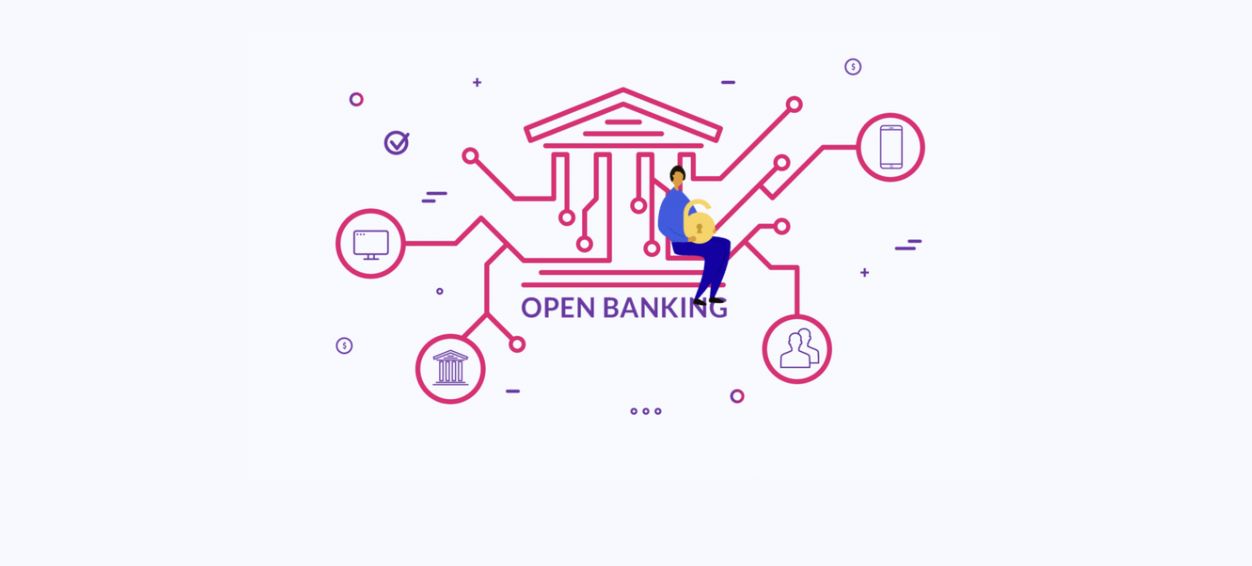Introduction
Open Banking has revolutionized the financial services industry, transforming the way individuals and businesses interact with their financial institutions. It is an innovative concept that empowers consumers to have more control over their finances and encourages competition among financial service providers. In this article, we will explore what Open Banking is, how it works, and the benefits it offers to both consumers and financial institutions.
Open Banking refers to the practice of sharing financial data securely and in a standardized format through the use of Application Programming Interfaces (APIs). It allows consumers to grant third-party providers access to their financial information, such as transaction history, account balances, and payment details, with their consent.
The introduction of Open Banking has brought numerous benefits to both consumers and financial institutions. For consumers, it means having greater visibility and control over their finances. It enables them to easily view their accounts from multiple providers in a single platform, making budgeting and financial management more efficient and convenient. It also opens up opportunities for personalized financial products and services tailored to their specific needs.
Financial institutions also gain significant advantages from Open Banking. By embracing open APIs, banks can foster collaboration with fintech companies, startups, and other third-party providers. This collaboration drives innovation and allows financial institutions to offer a wider range of products and services. It also creates new revenue streams through partnerships and increases customer retention by providing enhanced digital experiences.
The foundation of Open Banking lies in the use of Application Programming Interfaces (APIs). APIs act as intermediaries between different software applications, facilitating the secure exchange of data. With Open Banking APIs, third-party providers can access consumers’ financial data with their permission, enabling them to develop innovative and customized financial solutions.
Ensuring security and privacy is a paramount concern in Open Banking. Financial institutions are required to implement robust security measures and adhere to strict data protection regulations, such as the General Data Protection Regulation (GDPR) in the European Union. User consent and authentication protocols are also crucial to protect individuals’ financial information and prevent unauthorized access.
For consumers, Open Banking offers a seamless and personalized banking experience. By connecting their financial accounts to authorized third-party applications, individuals can access an aggregate view of their financial information, including bank accounts, credit cards, and investments. This allows for better financial management, as users can track their spending, analyze their financial habits, and receive tailored recommendations.
On the other hand, financial institutions also benefit from Open Banking by leveraging the capabilities of third-party applications. By integrating their services with these applications, banks can offer their customers enhanced features and functionalities. For example, users can initiate payments directly from their financial aggregator platforms, request loan quotes from various lenders, or even automatically transfer funds between accounts.
The future of Open Banking looks promising, as innovations continue to reshape the financial landscape. Open Banking encourages collaboration, competition, and customer-centricity, driving more efficient services and financial inclusion. As technology evolves and consumer demands evolve, we can expect to see more innovative solutions and partnerships that leverage the power of Open Banking to deliver exceptional financial experiences for consumers worldwide.
What is Open Banking?
Open Banking is a concept that revolutionizes the financial industry by allowing individuals and businesses to securely share their financial data with authorized third-party providers. It is driven by the use of Application Programming Interfaces (APIs) that facilitate the exchange of financial information between different software applications.
The core idea behind Open Banking is to empower consumers and give them more control over their financial data. In traditional banking models, financial institutions held a monopoly over customer information and services. With Open Banking, individuals have the ability to grant access to their financial data to trusted third-party providers, such as fintech companies and other financial service providers.
Open Banking is based on the principle of consent. Individuals must explicitly authorize the sharing of their financial information with third-party applications. This allows consumers to decide whom they want to provide access to their data and for what specific purposes. The consent process is usually managed through secure digital authentication methods, ensuring the privacy and security of users’ information.
One of the key components of Open Banking is the use of APIs. APIs act as bridges between different software systems, enabling seamless communication and data sharing. In the context of Open Banking, APIs allow third-party providers to retrieve relevant financial data from individuals’ accounts with their consent. This data can include transaction history, account balances, payment details, and more. APIs ensure that the data is exchanged securely and in a standardized format, enabling ease of integration and interoperability between different systems.
Open Banking brings numerous benefits to consumers. It allows for a more holistic view of their finances by aggregating data from multiple financial institutions in a single platform. This makes it easier for individuals to track their financial health, analyze their spending patterns, and make more informed decisions. Open Banking also promotes competition among financial service providers, leading to more innovative products and personalized services tailored to individual needs and preferences.
Financial institutions also stand to gain from Open Banking. By embracing the concept, banks can tap into the capabilities of fintech companies and other third-party providers. They can offer their customers a wider range of services and personalized experiences by integrating with these providers’ applications. This collaboration also enables banks to streamline their operations, reduce costs, and improve customer retention.
Open Banking is not only transforming the way individuals and businesses interact with financial services but also driving the evolution of the entire financial ecosystem. The sharing of financial data in a secure and standardized manner opens up new opportunities for innovation, collaboration, and improved customer experiences. As Open Banking continues to spread globally, it sets the stage for a new era of financial services that prioritize transparency, consumer control, and technological advancement.
The Benefits of Open Banking
Open Banking has brought about numerous benefits to both consumers and financial institutions, transforming the way financial services are delivered and experienced. Let’s explore some of the key advantages of Open Banking:
1. Enhanced Financial Management: Open Banking allows individuals to have a holistic view of their financial data, including accounts from different financial institutions, credit cards, loans, and investments, all in one place. This consolidated view makes it easier to track spending, analyze financial habits, and effectively manage their money.
2. Personalized Products and Services: Open Banking opens up opportunities for personalized financial products and services based on individual financial data. By leveraging user information, financial institutions and third-party providers can develop tailored offerings such as customized loan options, personalized investment portfolios, and targeted financial advice.
3. Improved Access to Finance: Open Banking allows individuals with limited or no credit history to access financial services more easily. By analyzing a broader range of financial data, including transaction history and cash flow patterns, lenders can make more accurate and inclusive credit assessments, enabling greater financial inclusion for individuals and businesses.
4. Enhanced Security and Fraud Prevention: While the concept of Open Banking may raise concerns about data security, it actually reinforces security measures. Through Open Banking, individuals have better control over their financial data and can monitor access permissions. Financial institutions also implement strict security protocols to ensure safe data transmission and protect against unauthorized access or fraudulent activities.
5. Increased Competition and Innovation: Open Banking fosters competition among financial service providers, driving them to create innovative products and services to attract and retain customers. The availability of open APIs encourages collaboration between financial institutions and fintech companies, creating opportunities for new and improved financial solutions and a more vibrant and dynamic market.
6. Streamlined Account Integration: Open Banking simplifies the process of integrating and managing multiple financial accounts across different institutions. Through authorized third-party applications, individuals can perform various tasks such as fund transfers, bill payments, and financial analytics without the need to switch between multiple banking platforms. This streamlines financial management and provides a more convenient and seamless user experience.
7. Easy Switching of Financial Providers: With Open Banking, individuals can switch their financial service providers more easily. By granting access to their financial data through APIs, users can share their banking history and financial profile with new institutions, simplifying the account opening and switching process. This promotes competition among providers and encourages better offers and services to attract new customers.
8. Business Opportunities and Partnerships: Open Banking creates opportunities for collaboration and partnerships between financial institutions, fintech companies, and other third-party providers. This collaboration allows for the development of innovative financial solutions, such as integrated payment systems, digital wallets, and lending platforms, ultimately benefiting consumers and businesses alike.
Overall, Open Banking has the potential to revolutionize the financial services industry, empowering individuals, fostering innovation, and improving financial outcomes. With its numerous benefits, Open Banking paves the way for a more inclusive, transparent, and customer-centric financial ecosystem.
The Role of APIs in Open Banking
Application Programming Interfaces (APIs) play a crucial role in enabling Open Banking and facilitating the secure exchange of financial data. APIs act as intermediaries between different software applications, allowing them to communicate and share information in a standardized and secure manner. Here’s a closer look at the role of APIs in Open Banking:
1. Secure Data Exchange: APIs act as gateways that enable authorized third-party providers to access individuals’ financial data securely. These APIs establish a secure channel of communication between financial institutions and third-party applications, ensuring that data is exchanged in a protected environment.
2. Standardized Data Format: APIs in Open Banking adhere to standardized data formats and protocols, ensuring seamless integration of various software systems. This standardization promotes interoperability and compatibility between different applications and financial institutions, making it easier for them to communicate with each other.
3. Consistent User Experience: APIs ensure a consistent user experience across different platforms. By facilitating the transfer of data between systems, APIs allow individuals to access their financial information and perform transactions seamlessly, regardless of the application or platform they use.
4. Real-time Data Retrieval: APIs provide real-time access to financial data, allowing individuals to view accurate and up-to-date information about their accounts, transactions, and balances. This real-time access enhances financial management, as individuals can make informed decisions based on the most current information.
5. Developer Enablement: APIs empower developers to create innovative and customized financial solutions. By providing access to financial data and functionalities, APIs enable developers to build applications that address specific financial needs or deliver unique user experiences.
6. Consent Management: APIs include features and mechanisms to manage user consent and permissions regarding the sharing of financial data. This ensures that individuals have control over who can access their information and for what purposes, reinforcing data privacy and protection.
7. Transactional Capabilities: APIs enable individuals to initiate and authorize transactions through third-party applications. This functionality allows users to make payments, transfer funds, and perform other financial transactions directly from the applications they are using, streamlining the banking experience.
8. Scalability and Flexibility: APIs provide the scalability and flexibility required to integrate multiple systems and accommodate evolving business needs. Financial institutions can adapt and extend their services by leveraging APIs, enabling them to stay agile and responsive to changing market demands.
Overall, APIs are the technological backbone of Open Banking, facilitating secure and standardized data exchange between financial institutions and authorized third-party providers. Through APIs, Open Banking enables seamless integration, real-time data access, and a range of innovative financial solutions to enhance the banking experience for individuals and businesses alike.
How Does Open Banking Ensure Security and Privacy?
Open Banking recognizes the critical importance of security and privacy when it comes to accessing and sharing financial data. Several measures are in place to ensure that individuals’ information is protected throughout the Open Banking process. Here’s how Open Banking ensures security and privacy:
1. Strong Authentication: Open Banking requires robust authentication methods to ensure that only authorized individuals can access their financial data. This typically involves multi-factor authentication, using a combination of passwords, biometrics, or unique tokens to verify the identity of users.
2. Consent Management: Open Banking emphasizes user consent as a fundamental principle. Consumers must explicitly grant consent before allowing third-party providers to access their financial data. This ensures that individuals have full control over who can access their information and for what specific purposes.
3. Secure Data Encryption: Open Banking mandates the use of strong encryption mechanisms to protect data during transmission and storage. Financial institutions and third-party providers employ industry-standard encryption protocols to safeguard sensitive information, ensuring that it remains encrypted and protected from unauthorized access.
4. Regulatory Compliance: Open Banking operates under strict regulatory frameworks, such as the General Data Protection Regulation (GDPR) in the European Union. Financial institutions and third-party providers must adhere to these regulations, including data protection requirements, consent management, and privacy standards, to ensure the privacy and security of individuals’ financial data.
5. Access Controls: Open Banking enforces strict access controls to limit who can access and use individuals’ financial data. Financial institutions and third-party providers implement granular access permissions, ensuring that only the necessary data is shared with authorized individuals or applications, reducing the risk of exposure or misuse.
6. Auditing and Monitoring: Open Banking includes auditing and monitoring mechanisms to track and identify any suspicious or unauthorized activities. Financial institutions and third-party providers implement robust monitoring systems to detect potential security breaches or data privacy issues promptly. This allows them to take appropriate measures to mitigate risks and secure individuals’ financial data.
7. Strong Data Protection: Open Banking requires financial institutions and third-party providers to implement stringent data protection policies and practices. This includes regularly updating software systems, establishing secure network infrastructures, and conducting regular security assessments to identify and address vulnerabilities.
8. Transparent Privacy Policies: Open Banking emphasizes transparency in informing individuals about how their financial data will be used and shared. Financial institutions and third-party providers are required to have clear privacy policies that outline how data will be handled, who has access to it, and the purposes for which it will be used, providing individuals with a clear understanding of the data-sharing process.
By implementing these security and privacy measures, Open Banking ensures that individuals’ financial data is protected throughout the data-sharing process. This allows individuals to have confidence in the security and privacy of their financial information and encourages wider adoption of Open Banking services. As technology continues to evolve, Open Banking will continue to enhance security and privacy measures to address emerging threats and protect individuals’ financial well-being.
How Does Open Banking Work for Consumers?
Open Banking offers numerous benefits and opportunities for consumers, empowering them with more control over their financial information and enhancing their overall banking experience. Here’s a closer look at how Open Banking works for consumers:
1. Integration of Financial Data: Open Banking allows consumers to integrate their financial data from multiple sources into a single platform or application. Using authorized third-party providers, individuals can view their bank accounts, credit cards, loans, and other financial information all in one place. This provides a comprehensive view of their finances, making it easier to track spending, manage budgets, and assess overall financial health.
2. Consolidated Account Management: With Open Banking, consumers can manage multiple financial accounts seamlessly. They no longer need to switch between different banking apps or websites to access their accounts. Open Banking platforms and applications enable individuals to perform various tasks such as fund transfers, bill payments, and viewing transaction histories across multiple financial institutions from a single interface.
3. Personalized Financial Insights: Open Banking facilitates the generation of personalized financial insights and recommendations based on individuals’ financial behavior and preferences. By analyzing transaction data and spending patterns, third-party providers can offer tailored recommendations to optimize finances, save money, and make informed financial decisions.
4. Access to New Services and Providers: Open Banking opens up opportunities for consumers to access a wider range of financial services and products. Through APIs, financial institutions can collaborate with innovative fintech companies and other third-party providers to offer new and specialized services. This includes digital payment solutions, loan comparison platforms, budgeting apps, and investment management tools.
5. Enhanced Security and Control: With Open Banking, consumers have greater control over their financial data. They can choose which third-party providers have access to their data and for what specific purposes. This consent-driven approach ensures that individuals maintain control and can revoke access at any time. Strong security measures such as authentication protocols, encryption, and audit trails protect consumers’ financial information throughout the data-sharing process.
6. Streamlined Application and Account Switching: Open Banking simplifies the process of applying for new financial products or switching providers. Through APIs, individuals can securely share their financial information and history with new institutions, making it easier and more efficient to open accounts or apply for loans and credit cards. This promotes competition and encourages financial institutions to provide better offers and services to attract new customers.
7. Financial Inclusion: Open Banking has the potential to promote financial inclusion by leveraging additional data points for credit assessment. Individuals with limited credit history or thin files can benefit from Open Banking as lenders can consider a broader range of financial data for making lending decisions, increasing access to loans and credit for those who may have previously been excluded.
8. Innovation and Customization: Open Banking creates an environment for innovation and customization in financial services. Third-party providers can develop applications and services tailored to individual needs, such as personalized budgeting and saving tools, investment advice, and targeted financial product recommendations. This fosters a more customer-centric approach and improves the overall user experience.
Overall, Open Banking empowers consumers by giving them more control over their financial information and providing greater convenience, personalization, and access to innovative financial products and services. With Open Banking, individuals can make more informed financial decisions, simplify their banking experience, and achieve better financial outcomes.
How Does Open Banking Work for Financial Institutions?
Open Banking presents significant opportunities and challenges for financial institutions, reshaping the way they operate and interact with customers. Here’s a closer look at how Open Banking works for financial institutions:
1. Collaboration and Partnerships: Open Banking encourages financial institutions to collaborate with fintech companies, startups, and other third-party providers. Through partnerships, financial institutions can tap into the capabilities of these providers and offer a wider range of innovative and specialized products and services. This collaboration drives innovation, improves customer experiences, and expands the reach of financial institutions.
2. Enhanced Customer Acquisition and Retention: By embracing Open Banking, financial institutions can attract new customers and increase customer retention rates. Open Banking platforms and APIs enable seamless integration with third-party applications, allowing financial institutions to offer enhanced features, such as personalized financial management tools and integrated payment solutions. These offerings provide a superior banking experience, giving customers more reasons to stay with their current financial institution.
3. Streamlined Operations and Cost Reduction: Open Banking provides opportunities for financial institutions to streamline their operations and reduce costs. By integrating with third-party providers, financial institutions can leverage their expertise and infrastructure, reducing the need for building and maintaining costly in-house solutions. This allows financial institutions to focus resources on core competencies while benefiting from the agility, innovation, and cost efficiency of external providers.
4. Data-Driven Insights and Analytics: Open Banking enables financial institutions to gain deeper insights into customer behavior and needs. By analyzing the data shared through APIs, financial institutions can obtain a comprehensive view of customer financial profiles and transaction histories. This data-driven approach allows for more accurate risk assessment, customized product recommendations, and personalized customer interactions.
5. Compliance and Regulatory Adherence: Open Banking requires financial institutions to comply with strict regulatory standards and data protection requirements. Financial institutions must ensure that their systems and processes adhere to relevant regulations, such as the General Data Protection Regulation (GDPR) in the European Union. Open Banking necessitates robust security measures, consent management, and data privacy practices to protect customers’ financial data and maintain compliance.
6. New Revenue Streams: Open Banking opens up opportunities for financial institutions to explore new revenue streams by leveraging collaborations with third-party providers. Financial institutions can enter into revenue-sharing agreements or develop white-label solutions for fintech products and services. This allows financial institutions to monetize their customer base, expand their product portfolio, and generate additional revenue without significant investment in research and development.
7. Improved Risk Management: With access to more comprehensive financial data, financial institutions can enhance their risk management strategies. Open Banking allows for more accurate credit assessments, fraud detection, and identification of potential money laundering activities. Financial institutions can leverage the insights derived from open APIs to strengthen their risk mitigation efforts and ensure a safer banking environment.
8. Adaptability and Agility: Open Banking requires financial institutions to be adaptable and agile in adopting new technologies and keeping up with market trends. To stay competitive, financial institutions need to embrace digital transformation, invest in modern infrastructure, and foster a culture of innovation. Those that effectively leverage Open Banking can leverage emerging technologies, enhance their customer offerings, and thrive in the ever-evolving financial services landscape.
Overall, Open Banking presents a paradigm shift for financial institutions, enabling them to embrace collaboration, enhance customer experiences, streamline operations, and leverage data-driven insights. Through Open Banking, financial institutions can adapt and thrive in the digital age, offering innovative and customer-centric services that meet the evolving demands of modern banking.
The Future of Open Banking
The future of Open Banking is filled with exciting possibilities as technology continues to advance and consumer expectations evolve. Here’s a glimpse into what the future holds for Open Banking:
1. Increased Market Adoption: As awareness and understanding of Open Banking grow, we can expect to see increased adoption across more countries and regions worldwide. Governments and regulators are recognizing the potential benefits of Open Banking and are working to create the necessary frameworks and guidelines to encourage its adoption.
2. Innovation and Collaboration: Open Banking will continue to foster innovation and collaboration within the financial services industry. Financial institutions, fintech companies, and other third-party providers will increasingly collaborate to bring new and innovative solutions to market. We can expect to see more partnerships, joint ventures, and acquisitions as organizations strive to leverage each other’s strengths and capabilities.
3. Expansion of Use Cases: Open Banking will expand beyond traditional banking services to cover a broader range of use cases. We will likely see the integration of Open Banking principles into areas such as insurance, wealth management, and even non-financial sectors. This expansion will unlock new opportunities for personalized experiences and tailored solutions.
4. Advanced Data Analytics: As the volume of data shared through Open Banking increases, so will the capabilities of data analytics. Financial institutions will leverage advanced analytics techniques, such as artificial intelligence and machine learning, to derive actionable insights from customer data. This will enable them to offer more targeted products, better risk assessment, and personalized financial recommendations.
5. Seamless Digital Experiences: Open Banking will continue to drive the development of seamless digital experiences for consumers. Open APIs will enable the integration of financial services into consumers’ everyday lives, with features such as secure in-app payments, voice-activated banking, and personalized financial assistants. This will make banking more convenient, accessible, and tailored to individual preferences.
6. Enhanced Financial Inclusion: Open Banking has the potential to bridge the gap in financial inclusion. By leveraging additional data points and unconventional credit assessment methodologies, Open Banking can provide better access to financial services for underserved populations, such as individuals with limited credit history or those in emerging markets.
7. Data Governance and Privacy: As Open Banking evolves, there will be an increasing focus on data governance and privacy. Regulators and industry stakeholders will work together to establish robust frameworks to protect consumer data, ensure the responsible use of data by third-party providers, and build trust among consumers.
8. Regulatory Harmonization: Cooperation among regulators across different jurisdictions will be crucial for the successful implementation and growth of Open Banking. The alignment of regulatory frameworks and standards will promote interoperability, facilitate cross-border transactions, and foster a more globally connected and seamless banking ecosystem.
9. Strengthened Security Measures: As technology advances, Open Banking will continue to strengthen its security measures. Two-factor authentication, biometrics, and advanced encryption techniques will become more prevalent to protect consumer data. Continuous efforts to adapt to emerging security threats and the use of advanced technologies will be essential to maintaining consumer trust.
Overall, the future of Open Banking holds immense potential to transform the financial services landscape. As technology, regulation, and consumer demand continue to evolve, Open Banking will drive innovation, collaboration, and enhanced financial experiences for consumers, leading to a more inclusive, customer-centric, and digitally-driven banking ecosystem.
Conclusion
Open Banking has revolutionized the financial services industry, empowering consumers and transforming the way financial institutions operate. Through the use of Application Programming Interfaces (APIs), Open Banking enables secure and standardized data sharing, giving individuals more control over their financial data and fostering competition, innovation, and collaboration within the industry.
The benefits of Open Banking are abundant. Consumers can enjoy a seamless banking experience through integrated financial information, personalized products and services, and enhanced financial management tools. Open Banking also promotes financial inclusion by leveraging additional data points for credit assessment and streamlines the process of switching financial providers.
Financial institutions, on the other hand, can leverage Open Banking to offer a wider range of services, collaborate with fintech companies, reduce costs, and gain valuable insights into customer behavior. Open Banking paves the way for increased innovation, revenue generation, and improved risk management within financial institutions.
The future of Open Banking looks promising, with increased market adoption, expanded use cases, advanced data analytics, and seamless digital experiences. As technology continues to advance, Open Banking will play a crucial role in driving digital transformation, enhancing customer experiences, and fostering a more connected and customer-centric banking ecosystem.
However, with these advancements come the important considerations of security, privacy, and regulatory compliance. Financial institutions and third-party providers must prioritize robust authentication methods, data encryption, consent management, and compliance with data protection regulations. Cooperation among regulators will also be crucial to ensure regulatory harmonization and the protection of consumer data.
As we move forward, it is essential to strike a balance between innovation and the protection of consumer interests. Open Banking has the potential to reshape the financial services industry for the better, providing individuals with greater control over their finances, fostering competition, and driving a more inclusive and customer-centric banking landscape.
In conclusion, Open Banking represents a transformative shift in the financial industry, offering immense opportunities for both consumers and financial institutions. By embracing Open Banking and leveraging its benefits, we can create a more connected, innovative, and customer-centric financial ecosystem that meets the evolving needs and expectations of individuals and businesses worldwide.

























